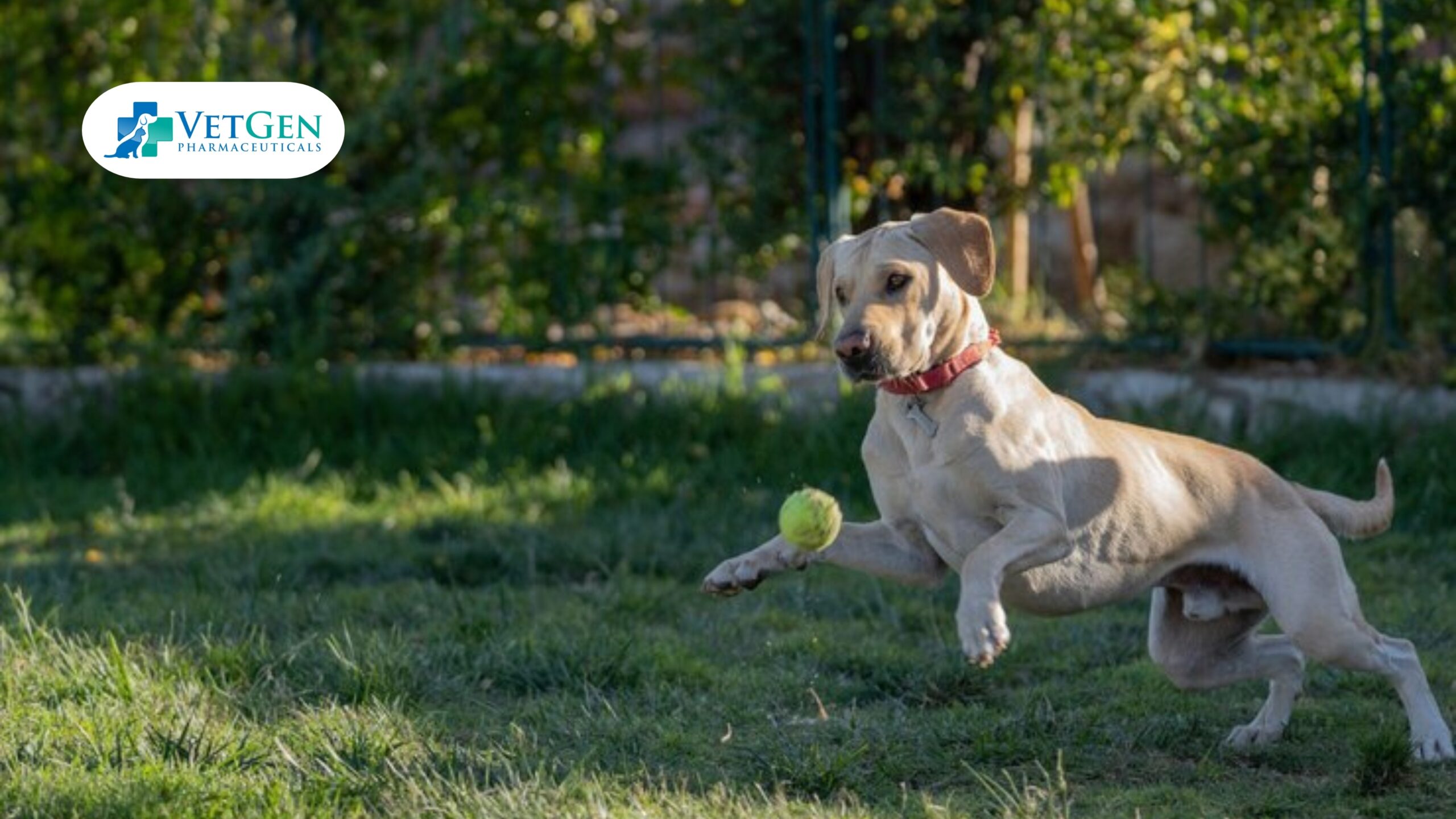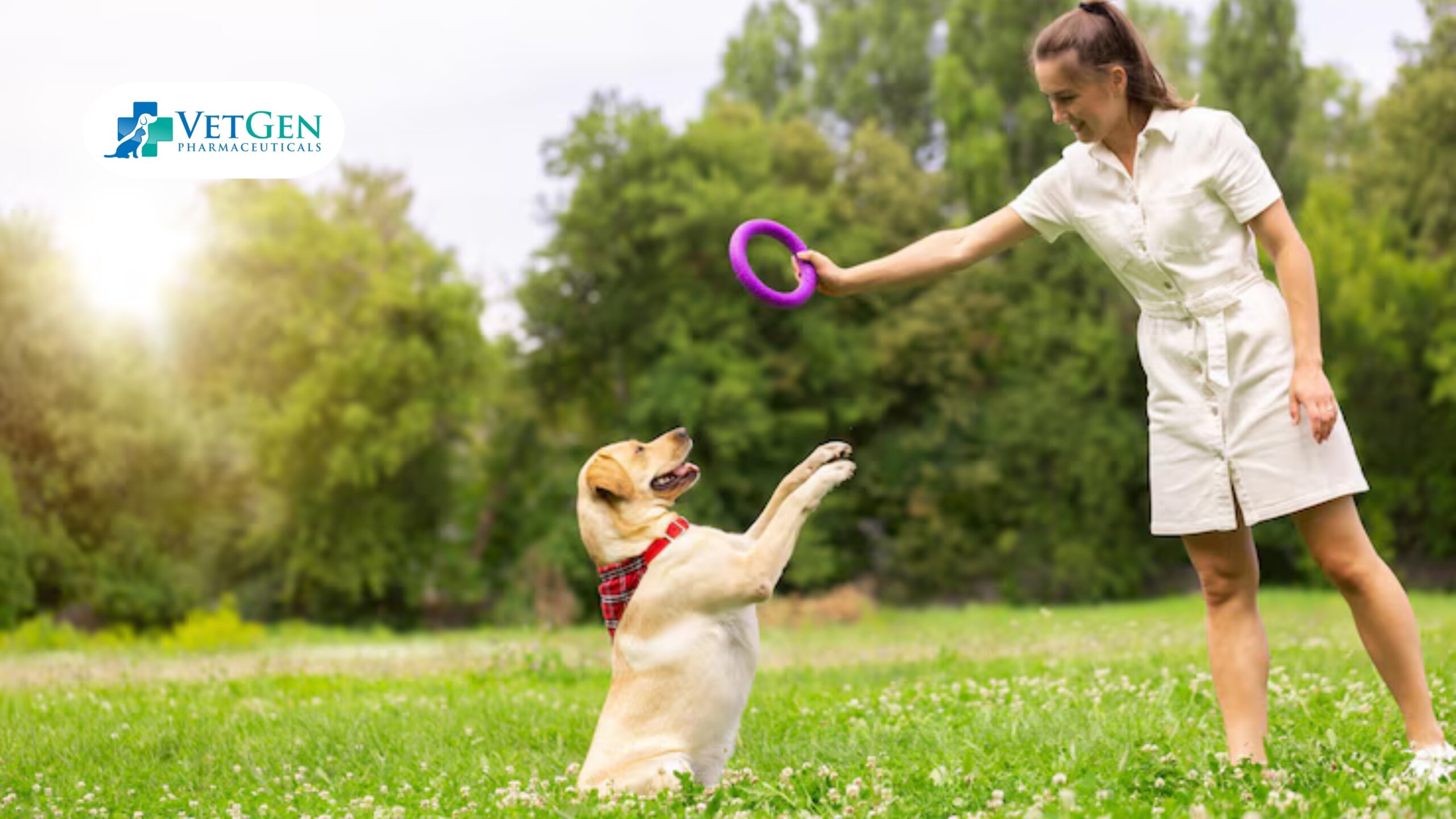If you own a Labrador Retriever, you already know they’re bundles of energy wrapped in fur. Whether they’re chasing tennis balls, splashing in puddles, or greeting every passerby with a wagging tail, Labs are the epitome of enthusiasm.
But how much exercise does your Labrador really need to stay fit and happy? It’s a crucial question, especially considering their predisposition to obesity and joint issues. While some sources suggest an hour of daily activity, others recommend up to two hours, depending on age, health, and energy levels.
In this blog, we’ll explore the optimal exercise routines for your Lab, so that by the end, you’ll have a clear roadmap to ensure your furry friend remains healthy, content, and full of life.
Understanding Your Labrador’s Exercise Needs
Labrador Retrievers are one of the most popular dog breeds in the United States, and it’s not hard to see why. With their boundless energy, affectionate nature, and eagerness to please, they make excellent companions for families and active individuals alike. But with great energy comes great responsibility.
Labradors are a high-energy working breed developed initially to retrieve fishing nets and game, so regular physical activity isn’t just a bonus for them, it’s a necessity. According to the American Kennel Club (AKC), consistent daily exercise is vital to a Lab’s physical health and emotional well-being. Without it, they’re more prone to destructive behaviors, obesity, and even anxiety.
Puppies
For Labrador puppies, exercise needs to be approached with a bit of caution. While they may seem like tiny energy machines, their growing bones and joints are still fragile.
Overexertion at a young age can lead to developmental joint problems like hip dysplasia, which is already a common issue in the breed. A widely recommended approach is the “5-minute rule,” which suggests five minutes of structured exercise per month of age, up to twice per day. So, a 3-month-old Lab puppy should get about 15 minutes of exercise at a time.
This can include short walks, light play, or gentle fetch games. Avoid high-impact activities like jumping or long runs, which can be hard on developing joints. Focus on consistency rather than intensity at this stage.
Adults
Once your Labrador hits adulthood (typically around 12 to 18 months), their exercise needs increase significantly. Adult Labradors generally require between 60 to 120 minutes of physical activity every day. This should be a mix of walks, off-leash running (in safe areas), and interactive games like fetch or tug-of-war. Not only does this help manage their weight and physical fitness, but it also reduces the risk of behavioral issues like chewing, digging, and excessive barking.
Well-exercised Labradors are significantly less likely to suffer from anxiety and boredom-related behaviors. Also, mentally stimulated Labs tend to be more trainable and obedient, a big win for pet parents.
Seniors
As Labradors age, their energy levels naturally decline. But that doesn’t mean exercise should stop; it just needs to be adjusted. Older Labs benefit from gentler, lower-impact activities such as leisurely walks, short hikes, or swimming sessions. Swimming is particularly beneficial for aging joints, providing excellent cardiovascular exercise without the harsh impact of land-based activities.
Staying active helps older Labs maintain a healthy weight, avoid arthritis complications, and stay mentally engaged. Always monitor your senior Lab for signs of fatigue or joint discomfort, and consult your vet to tailor their exercise plan accordingly.

Types of Exercise for Labradors
To keep your Labrador truly fit and happy, variety is key. Just like humans, dogs can get bored with the same routine. Mixing physical and mental exercises not only keeps them interested but also promotes overall well-being.
Walking
Walking is the cornerstone of any exercise routine for a Lab. Aim for at least 30 minutes to an hour per day, but many Labs can handle even more, especially younger adults. Break it into two or more sessions for best results.
Walks help with physical health, but they’re also an important opportunity for your Lab to explore the world through sniffing and socializing. A varied walking route keeps things stimulating for your pup and less monotonous for you.
Fetch and Retrieval Games
Labradors were bred to retrieve, so fetch is practically in their DNA. This activity burns calories fast, builds endurance, and mentally satisfies their instinct to chase and return. Use a ball launcher or a Frisbee to make it more engaging.
Just be cautious of repetitive high-impact jumps, especially on hard surfaces.

Swimming
Labradors love water, and they’re built for it. Their webbed feet, water-resistant coat, and muscular build make them natural swimmers. Swimming is an ideal low-impact exercise that’s easy on the joints while providing a full-body workout. It’s especially great for older dogs or those recovering from injuries.
Agility Training
Agility courses combine fun with functional exercise. These structured play sessions involve tunnels, jumps, weave poles, and other obstacles. It’s a great way to build coordination, boost confidence, and provide mental challenges. You can join a local agility class or set up a DIY course in your backyard.
Interactive Toys and Puzzles
Physical exercise is only part of the equation. Mental stimulation plays a huge role in keeping your Lab well-rounded and well-behaved. Interactive toys like treat-dispensing puzzles or scent games help exercise their minds. You can even teach them new tricks or rotate toys regularly to keep things interesting.

Tailoring Exercise to Your Labrador's Needs
Every Labrador is unique. Factors like age, health status, and individual temperament influence exercise needs.
- High-Energy Labs: May require closer to 2 hours of activity daily.
- Laid-Back Labs: Might be content with 45 minutes to an hour of exercise.
- Health Considerations: Dogs with joint issues or other health concerns may need modified exercise routines.
Always consult with your veterinarian to develop an exercise plan tailored to your dog’s specific needs.
Conclusion
Ensuring your Labrador receives adequate exercise is paramount for their health and happiness. Regular physical activity prevents obesity, reduces behavioral issues, and enhances overall well-being.
At VetGen Pharmaceuticals, we’re dedicated to supporting your pet’s health journey. Visit us for more info.
Frequently Asked Questions
What happens if my Labrador doesn’t get enough exercise?
When Labradors don’t get adequate exercise, it can lead to a host of physical and behavioral problems. Lack of activity contributes to obesity, which is already a common issue in the breed and can lead to joint problems, diabetes, and heart disease.
Can I over-exercise my Labrador?
Yes, over-exercising is possible, especially in puppies and senior Labradors. Puppies have developing bones and joints, and too much high-impact activity can cause permanent damage, such as hip or elbow dysplasia. Similarly, older dogs with arthritis or other age-related conditions may experience discomfort if pushed too hard.
How do I know if my Labrador is getting enough exercise?
A well-exercised Labrador will display calm behavior indoors, maintain a healthy weight, and show good muscle tone and flexibility. Mentally, they should seem content, engaged, and not exhibit signs of boredom or frustration.






